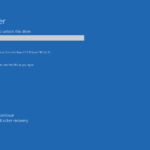Bottleneck Calculator
Analyze PC Performance & Get Custom Build Recommendations.
Your Recommended Build
Optimized for at p for .
Analyzing…
Analysis Complete
Detailed Analysis
Recommendations
Expected Gaming Experience (p)
Esports Titles
AAA Titles
Optimization Tips
Graphics Settings
- Enable DLSS/FSR for a significant performance boost.
- Reduce shadow and reflection quality for easy FPS gains.
System Optimization
- Close unnecessary background applications before gaming.
- Ensure your RAM is running at its advertised speed (XMP/EXPO).
Every PC builder, from the novice to the seasoned enthusiast, chases the same dream: a perfectly smooth, high-performance machine that runs every game and application flawlessly. Yet, a common and often misunderstood problem can stand in the way of that dream: a system bottleneck. You might have a top-of-the-line graphics card, but if your frame rates are still stuttering and inconsistent, a bottleneck is likely the culprit.
This guide will demystify the concept of PC bottlenecks. We’ll explore what they are, why they happen, and most importantly, how to use the Bottleneck Calculator tool to diagnose your current system or plan a perfectly balanced new build.
What is a PC Bottleneck?
At its core, a PC is a team of components working together. A bottleneck occurs when one component is significantly slower than the others, holding back the system’s overall performance. Think of it like a chain: its strength is determined not by its strongest link, but by its weakest. In the world of PC gaming, this dynamic most often plays out between the Central Processing Unit (CPU) and the Graphics Processing Unit (GPU).
To understand this, let’s use an analogy: imagine a high-end restaurant kitchen.
- The CPU is the master chef. The chef’s job is to process orders, manage the kitchen staff, and prepare all the ingredients for a dish. In a game, the CPU handles the game’s logic, physics, AI, and prepares the data for each frame.
- The GPU is the star food-plater. Their job is to take the prepared ingredients and artistically arrange them on the plate to create the final, beautiful dish that gets served. In a game, the GPU takes the frame data from the CPU and renders the final image you see on your screen.
A bottleneck happens when this workflow is unbalanced:
- CPU Bottleneck: The CPU is too slow. They can’t prepare ingredients fast enough, leaving the expert plater (GPU) waiting around with nothing to do. Your powerful GPU is sitting idle, and performance suffers. This often results in stuttering and inconsistent or low frame rates, especially in fast-paced games or at lower resolutions, where the GPU could be rendering frames very quickly.
- GPU Bottleneck: The plater (GPU) is too slow. The chef (CPU) is working at lightning speed, and prepared ingredients are piling up, waiting to be plated. Your CPU is ready to go, but the GPU can’t render the images fast enough. This is common at high resolutions (1440p, 4K) or with maximum graphics settings. This isn’t always a bad thing—it often means you are pushing your graphics card to its absolute limit to get the best visuals possible.
How to Use the Bottleneck Calculator & PC Builder
Our tool is designed to eliminate the guesswork. It’s split into two powerful utilities: the Bottleneck Checker for existing systems, and the PC Build Recommender for new ones.
Part 1: The Bottleneck Checker
This is the perfect tool if you already have a PC and want to check for issues, or if you’re planning an upgrade and want to see how a new component will pair with your old ones.
Step 1: Select Your CPU and GPU
Using the dropdown menus, select the exact CPU and GPU models in your system. Our database includes the latest hardware, including models expected through 2025, to ensure your analysis is future-proof.
Step 2: Define Your Gaming Scenario
Performance isn’t a single number; it’s situational. Tell the tool how you play:
- Gaming Resolution: Are you playing at 1080p, 1440p, or 4K? Lower resolutions are more demanding on the CPU, while higher resolutions heavily tax the GPU.
- Game Quality Settings: Maxing out settings to “Ultra” will demand far more from your GPU than playing on “Low.”
- Game Title: This is crucial. A game like Valorant is famously CPU-heavy, while a graphically stunning title like Cyberpunk 2077 with Ray Tracing enabled will push any GPU to its limits. Selecting your specific game provides a much more accurate analysis.
Choose Your Upscaling Technology
Technologies like NVIDIA’s DLSS and AMD’s FSR are game-changers. They render the game at a lower resolution and then use AI to intelligently upscale it, boosting frame rates. However, this reduces the load on the GPU, which can sometimes expose an underlying CPU bottleneck. Select whether you use these technologies on “Quality” or “Performance” modes, or not at all.
Step 4: Analyse Your Results
After clicking “Analyse My System,” you’ll get a detailed report that breaks down your PC’s performance balance, including an estimated bottleneck percentage, a detailed analysis of why it’s happening, and intelligent upgrade recommendations.
Part 2: The PC Build Recommender
If you’re starting from scratch, this tool is your new best friend. It takes your goals and budget and generates a complete, balanced parts list.
Step 1: Select Your Primary Game and Target Resolution
Tell the tool what you’ll be playing the most and on what kind of monitor.
Step 2: Choose Your Primary Use Case
How will you use your PC?
- Gaming: The tool will prioritize a balanced CPU/GPU combo for pure gaming performance.
- Gaming & Streaming: This requires a stronger CPU to handle both playing and encoding your stream simultaneously.
- Workstation: Content creation tasks like video editing and 3D rendering are heavily reliant on CPU core count and performance.
Step 3: Set Your Budget
Select a budget range, from entry-level to enthusiast-tier. This allows the tool to pick the best-performing components you can afford without overspending.
Step 4: Get Your Custom Build
The tool will instantly generate a full parts list, including a balanced CPU and GPU pair, along with suitable RAM, a compatible motherboard, a CPU cooler, storage, and the correct wattage power supply (SMPS). Even better, each component includes an affiliate link, making it easy to purchase your new build.
Beyond the Calculator: Final Optimization Tips
A balanced build is the foundation, but good habits will elevate your performance.
- Keep Drivers Updated: Always install the latest graphics drivers from NVIDIA, AMD, or Intel.
- Enable XMP/EXPO: Ensure your RAM is running at its full advertised speed by enabling its profile in your motherboard’s BIOS.
- Close Background Apps: Don’t let unnecessary programs consume precious CPU resources while you’re gaming.
Stop guessing and start analysing. A balanced PC is a happy PC, and with the right tools, building one has never been easier.




